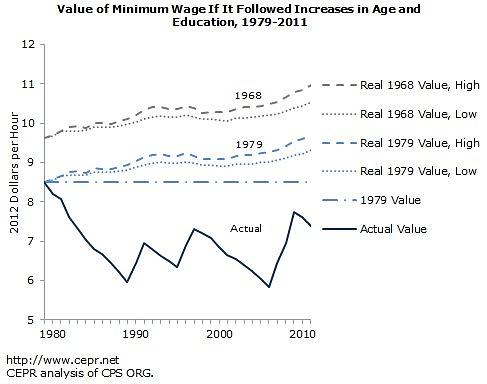November 25, 2013
In Local Living Wage Ordinances: Experience, Evidence and Best Practice, a recent report by the Center on Wisconsin Strategy (COWS), author Jody Knauss makes the case for increases in the minimum wage and discusses the most beneficial components of living wage laws.
At its current level of $7.25, the inflation-adjusted value of the minimum wage is about 20 percent below its level from three decades ago and no longer provides low-wage workers with a livable income. Low wages force many workers to rely on government assistance programs for basic necessities such as food, shelter, and health insurance. Adults ages 25-64 comprise 60 percent of low-wage workers; only 12 percent are teenagers.

Nineteen states, in addition to many more cities and counties, have adopted a minimum wage above the federal level, which help to lift workers out of poverty and reduce their reliance on tax-payer funded programs.
Beyond raising the minimum wage, the report advocates for the implementation of living wage ordinances. While minimum wage laws cover a wide range of workers at the federal, state, or local level, living wage ordinances typically raise the wages of a specific group of workers within a region, usually workers whose employers receive government contracts or benefit from tax breaks or other government support. Living wages are often set at a certain percentage above the poverty level, with wages updated each year in line with the cost of living. As a result, living wage ordinances raise and stabilize wages for covered low-income workers.
The report finds that requiring a living wage does not reduce employment, does not increase government costs, and does not lead to higher taxes. In fact, implementing a living wage has proven to lead to higher wages even for workers who are not directly covered by the law.
Employers also experience decreases in turnover and absenteeism costs when their workers are paid more. Low-wage workers typically spend all the money they earn, depositing the higher wages directly back into the economy. Living wages have positive effects for workers and the economy with minimal costs to employers.
The COWS report examines the living wage laws implemented in numerous cities and counties across the nation. It discusses the most important factors that localities should consider adopting in their own living wage laws. Read more about the best living wage practices in Local Living Wage Ordinances: Experience, Evidence and Best Practice.







